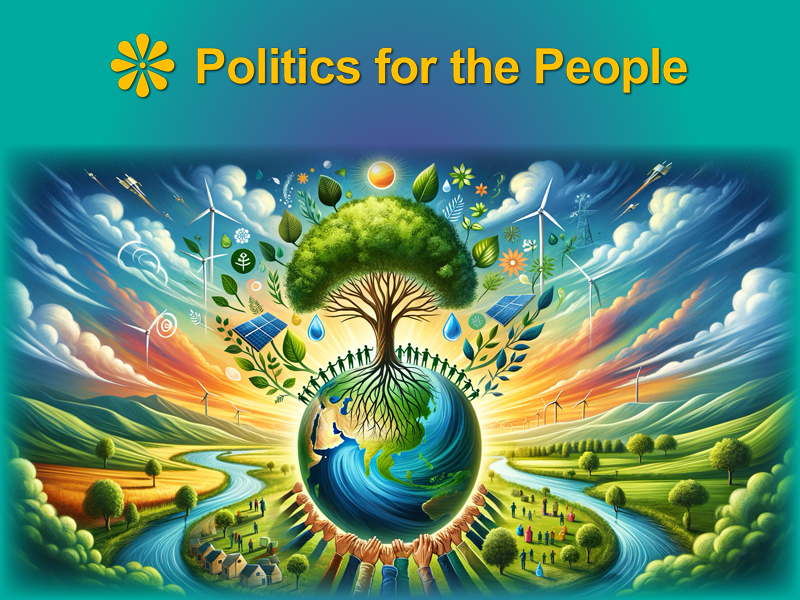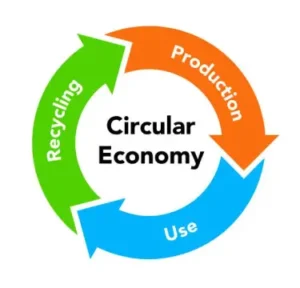Introduction: Why the Circular Economy Matters
The circular economy stands for a profound shift in our approach to production and consumption, a move away from the extractive industrial model known as the “take-make-dispose” system. As global populations grow and natural resources diminish, the need for a sustainable framework becomes increasingly critical. The circular economy offers a path to sustainable economic growth by minimizing waste and making the most of existing resources. This model not only helps in protecting the environment but also enhances efficiency, drives innovation, and fosters a fairer distribution of economic gains.
Understanding the Circular Economy
Redefining Growth: Economic Activity Without Resource Depletion
In contrast to the linear economy, the circular economy is designed to be regenerative by design. It aims to keep products, components, and materials at their highest utility and value always, distinguishing between technical and biological cycles. This systemic shift to circularity involves rethinking and redesigning processes to cut waste and minimize negative impacts, which requires a fundamental transformation in the way goods and services are produced and consumed.
Principles of the Circular Economy
Three core principles underpin the circular economy: designing out waste and pollution, keeping products and materials in use, and regenerating natural systems. Each principle requires distinct strategies and innovations, from developing new materials that are easier to recycle to creating business models that encourage the sharing and leasing of products rather than outright ownership.
Encouraging Sustainability in the Circular Economy
1. Reducing Resource Consumption
Key to the circular economy is the reduction of resource inputs and the waste generated in the production process. This can be achieved by adopting new efficient technologies, improving process design, and shifting towards renewable energy sources. Companies are encouraged to develop products with a longer life cycle and to use fewer materials, which can significantly lower the environmental footprint.
2. Designing for Durability and Repairability
Products designed for durability and ease of repair play a crucial role in the circular economy. This approach encourages manufacturers to consider the entire lifecycle of a product from the outset, designing for easy disassembly and repair. This not only extends the life of products but also supports a culture of maintenance and repair, reducing the need for added resources and decreasing waste.
3. Embracing the Power of Reuse
Reusing extends the life of products and materials, reducing the need to extract and process raw materials. Reuse can take many forms, from conventional methods like second-hand markets to innovative business models like product-as-a-service, where consumers pay for the use of a product without owning it outright. This shift not only conserves resources but also opens new business opportunities and can lead to economic growth.
4. Closing the Recycling Loop
Recycling is a critical part of the circular economy, but it requires more than just technological solutions; it requires systemic changes to ensure that materials flow back into the production cycle. This involves designing products from the start to be recycled, investing in recycling infrastructure, and educating consumers on proper recycling practices. Effective recycling also depends on the development of markets for recycled materials.
Achieving a Circular Economy
1. Collaboration Across Sectors
Achieving a circular economy demands collaboration across different sectors and disciplines. Governments, businesses, and civil society must work together to create enabling policies, develop necessary infrastructures, and drive cultural shifts. Policy measures could include incentives for circular business practices, stricter regulations on waste, and support for research and development in green technologies.
2. Education and Awareness
Awareness and education are fundamental for the widespread adoption of circular economy principles. Educational programs should not only target students but also business leaders, policymakers, and the public. These programs need to convey the importance of resource conservation and show the economic, environmental, and social benefits of a circular approach.
3. Leveraging Innovative Technologies
Technology plays a pivotal role in enabling the circular economy. Innovations such as the Internet of Things (IoT), blockchain, and big data can enhance product tracking, perfect resource use, and create efficient reverse planning for recycling and reuse. Technologies also offer new ways to engage consumers and stakeholders in the circular economy, making systems more transparent and accountable.
4. Transforming Business Models
Businesses need to rethink traditional models to embrace circular principles. This might involve shifting from selling products to leasing them, designing products for easy recycling, or creating new services that replace physical products with digital solutions. These changes require a deep integration of circular economy principles into company culture and business strategy.
Conclusion: Your Role in Shaping a Sustainable Future
The shift towards a circular economy is not just an environmental or economic necessity—it is a comprehensive societal change. As consumers, businesses, and policymakers, we all have a role to play. By embracing these principles, supporting circular products and services, and advocating for systemic change, we can contribute to a sustainable, resilient, and prosperous future.
- Are you ready to contribute to a sustainable future by joining the circular economy movement?
- What steps will you take to integrate circular principles into your daily life?
Take Action Today
Let’s work together to transform our world. Share your commitment and actions toward a circular economy on social media and encourage others to join the movement. Every step towards circularity helps in creating a sustainable planet.
References:
What is a circular economy: https://ellenmacarthurfoundation.org/topics/circular-economy-introduction/overview
Circular Economy: https://research.csiro.au/circulareconomy/
Navigating a path to sustainability: https://www.csiro.au/en/news/all/articles/2023/march/navigating-a-path-to-sustainability
What’s the path to sustainable development: https://oecd-development-matters.org/2018/12/14/whats-the-path-to-sustainable-development/ Organizing for sustainability success: https://www.mckinsey.com/capabilities/sustainability/our-insights/organizing-for-sustainability-success-where-and-how-leaders-can-start


